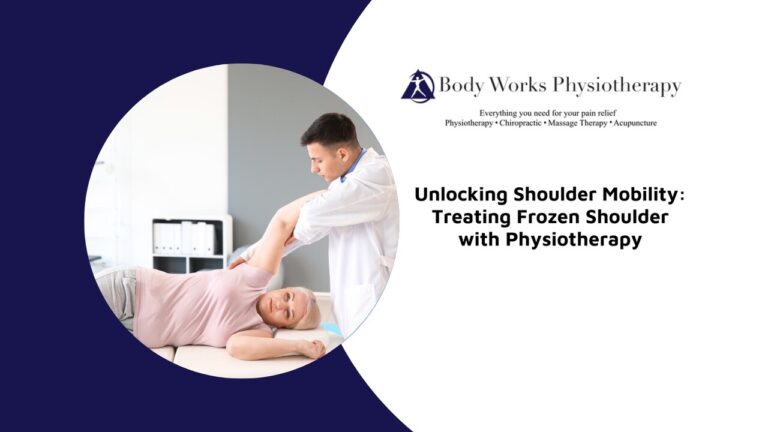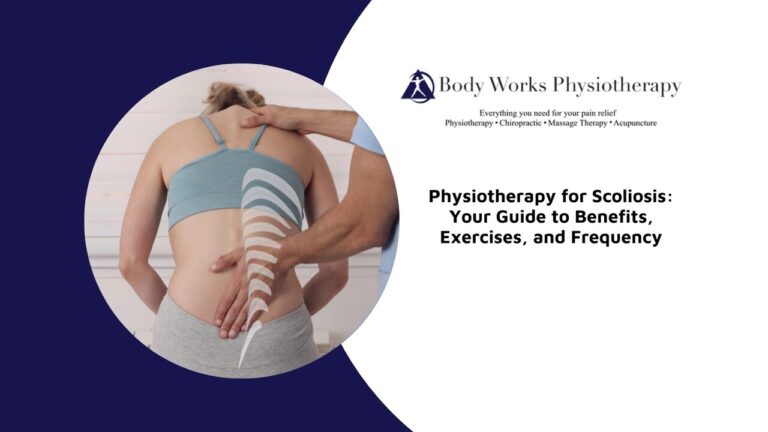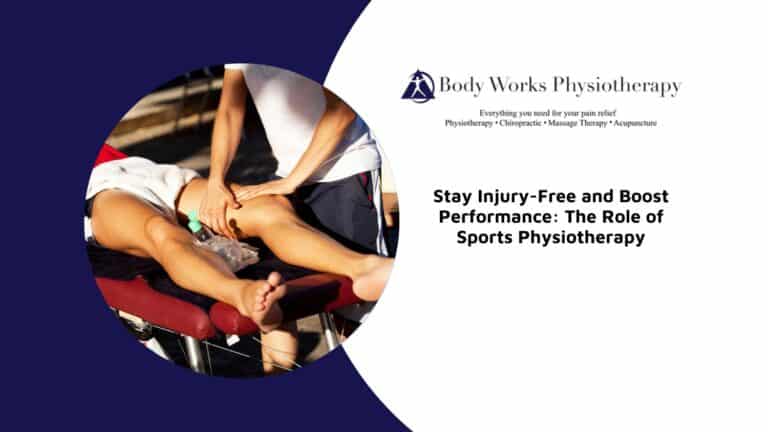
Movement is essential for overall health, but injuries, chronic pain, and poor posture can limit mobility and reduce quality of life. Physiotherapy exercises provide a targeted approach to pain relief, rehabilitation, and strength building, helping individuals regain function and prevent future injuries. Whether you’re recovering from an injury, managing a chronic condition, or looking to improve flexibility and posture, physiotherapy exercises are designed to support healing and long-term health. Understanding which exercises work best for your needs can help you make informed decisions about your recovery journey.
Physiotherapy Exercises Used for Improving Mobility
Improving mobility is a key focus of physiotherapy, as limited movement can impact daily activities, lead to muscle stiffness, and increase the risk of injury. Physiotherapy exercises help restore joint function, increase flexibility, and enhance movement patterns. These exercises target specific areas to ensure smoother, pain-free movement.
- Range-of-Motion (ROM) Exercises: These exercises help restore and maintain joint movement, reducing stiffness and preventing muscle tightness. Common ROM exercises include shoulder circles, wrist rotations, and gentle neck movements.
- Stretching Exercises: Stretching helps improve flexibility and prevents muscle tightness, which can limit mobility. Common stretches include hamstring stretches, quadriceps stretches, and chest openers.
- Joint Mobilizations: Performed under the guidance of a physiotherapist, joint mobilizations use gentle movements to increase flexibility and improve joint alignment. These techniques help individuals regain movement in stiff or injured joints.
- Dynamic Mobility Drills: Controlled movements, such as leg swings and arm circles, help warm up the muscles, increase range of motion, and improve coordination.
- Balance and Coordination Exercises: Good mobility requires balance and stability. Exercises such as single-leg stands, heel-to-toe walking, and stability ball movements improve coordination and reduce the risk of falls.
- Foam Rolling and Myofascial Release: Using a foam roller helps release tension in the muscles and connective tissue, promoting better mobility and reducing discomfort.
Pain Management: The Role of Physiotherapy
Chronic pain, injuries, and medical conditions can limit movement and lower quality of life. Physiotherapy exercises offer a structured approach to managing pain by addressing its root causes, promoting healing, and preventing further issues.
- Encourages Endorphin Release: Physiotherapy exercises help stimulate the release of endorphins, the body’s natural painkillers, providing relief from discomfort.
- Improves Joint Stability: Strengthening the muscles around affected joints helps reduce strain and prevent excessive movement that may cause pain.
- Increases Circulation: Improved blood flow from movement helps reduce inflammation, speed up healing, and supply oxygen to sore muscles.
- Reduces Muscle Tension: Gentle stretching and mobility exercises ease muscle tightness, which can contribute to pain and discomfort.
- Prevents Further Injury: Properly executed exercises correct movement patterns and strengthen weak areas, preventing compensatory movements that may lead to additional pain.
- Enhances Postural Alignment: Poor posture is a common cause of pain, particularly in the neck, shoulders, and lower back. Posture-focused exercises help realign the body and reduce strain on muscles and joints.
- Supports Long-Term Pain Management: A structured exercise plan provides lasting benefits, allowing individuals to maintain pain relief even after formal physiotherapy sessions end.
How Often Should Physiotherapy Exercises Be Performed for Maximum Benefit?
To maximize the benefits of physiotherapy exercises, it’s generally recommended to perform them at least 3-4 times per week, depending on the type of injury or condition. However, your physiotherapist will provide a personalized plan based on your recovery needs and goals. Consistency is key, as regular practice helps improve strength, mobility, and pain management over time.
Physiotherapy Exercises for Strengthening Muscles
Strengthening exercises in physiotherapy focus on rebuilding muscle function, improving endurance, and preventing muscle imbalances that can lead to pain or injury. These exercises use various techniques to gradually improve muscle strength.
- Bodyweight Exercises: Simple yet effective, bodyweight exercises like squats, lunges, and bridges activate multiple muscle groups and improve functional strength.
- Resistance Band Training: Resistance bands provide controlled tension, making them ideal for strengthening weaker muscles without excessive strain. Exercises such as banded rows, lateral leg raises, and bicep curls help develop muscle endurance.
- Weight Training: Light to moderate dumbbells or kettlebells can be used for exercises like shoulder presses, leg extensions, and seated rows to build muscle strength in a controlled manner.
- Core Strengthening: A strong core supports proper posture and reduces strain on the lower back. Planks, Russian twists, and leg raises are effective for engaging the core muscles.
- Isometric Exercises: These involve holding a position for a period of time to build muscle endurance. Examples include wall sits, glute bridges, and static holds.
- Functional Strength Exercises: These exercises mimic real-life movements to build strength for everyday activities. Movements like step-ups, kettlebell carries, and hip hinges improve overall functional fitness.
How Physiotherapy Exercises Differ Based on the Injury or Condition
Physiotherapy exercises are highly individualized, as each injury or condition requires a unique approach. The focus of treatment varies depending on the affected area, severity of symptoms, and recovery goals.
- Post-Surgery Rehabilitation: After surgery, exercises focus on gentle stretching, ROM movements, and gradual strengthening to restore movement without causing strain.
- Lower Back Pain: Strengthening the core, improving posture, and incorporating mobility drills help alleviate lower back discomfort and prevent recurring issues.
- Arthritis Management: Low-impact exercises like swimming, cycling, and water therapy help maintain joint mobility without excessive stress.
- Sports Injuries: Athletes require sport-specific exercises focusing on stability, coordination, and strengthening to prevent reinjury and optimize performance.
- Postural Dysfunctions: Individuals with poor posture benefit from exercises targeting the spine, shoulders, and hips to correct imbalances and alleviate strain.
- Joint or Ligament Injuries: Recovery from joint sprains or ligament tears includes progressive strengthening, proprioception training, and controlled stretching.
Posture Correction: Recommended Physiotherapy Exercises
Poor posture can contribute to chronic pain, restricted mobility, and muscular imbalances. Physiotherapy exercises help realign the body, strengthen weak muscles, and promote proper movement patterns.
- Chin Tucks: This exercise strengthens the deep neck muscles and helps correct forward head posture.
- Wall Angels: By engaging the upper back and shoulders, this movement improves scapular control and counteracts rounded shoulders.
- Planks and Core Activation: Core engagement is essential for maintaining proper spinal alignment and preventing excessive pressure on the lower back.
- Scapular Squeezes: Strengthening the muscles between the shoulder blades helps counteract slouching and promotes better posture.
- Bridges and Hip Extensions: Strengthening the lower back and glutes improves posture by providing better pelvic alignment and spinal support.
- Thoracic Extension Stretches: These stretches open up the chest and improve mobility in the upper back, reducing the effects of prolonged sitting.
- Postural Awareness Drills: Learning how to maintain proper posture throughout daily activities ensures long-term improvements and prevents reoccurring pain.
By incorporating these posture-focused exercises into a physiotherapy routine, individuals can improve spinal alignment, reduce muscle strain, and maintain an upright, balanced posture.
Performing Physiotherapy Exercises at Home: What to Know
Physiotherapy exercises can be safe to do at home without supervision once you’ve been properly instructed by a licensed physiotherapist. However, it’s essential to follow the prescribed exercises closely and avoid overdoing them. If you experience any pain or discomfort, it’s important to stop and consult with your physiotherapist to ensure you’re performing the exercises correctly and safely.
Healing Through Movement
Physiotherapy exercises are a powerful tool for recovery, pain relief, and injury prevention. With the right approach, you can strengthen your body, improve mobility, and restore function safely and effectively. If you’re looking for guidance on physiotherapy exercises tailored to your needs, Body Works Physiotherapy in Scarborough is here to help. Our team of skilled professionals will create a customized treatment plan to support your recovery and long-term health. Take the next step toward a healthier, more active life—schedule your appointment today!





